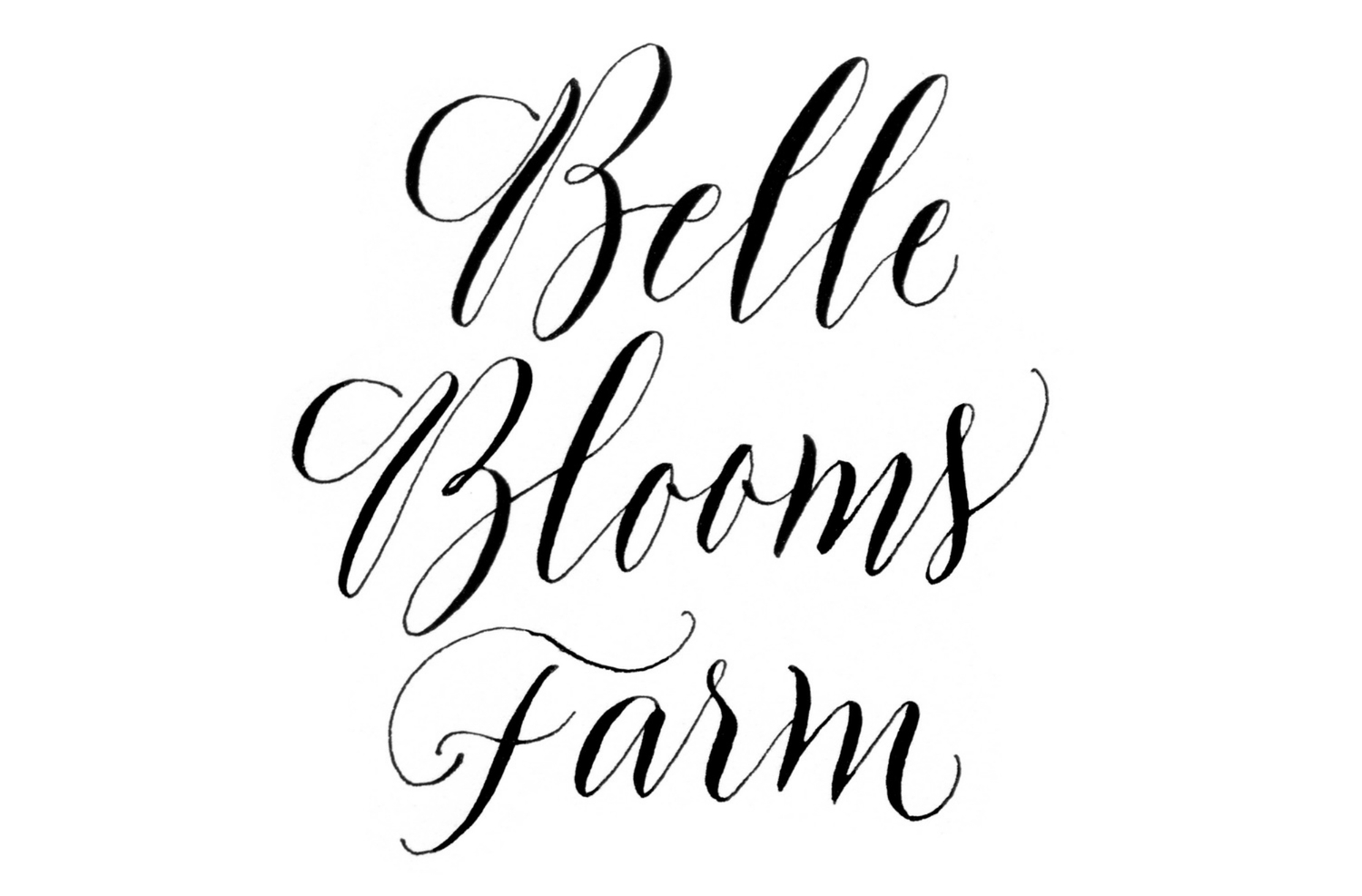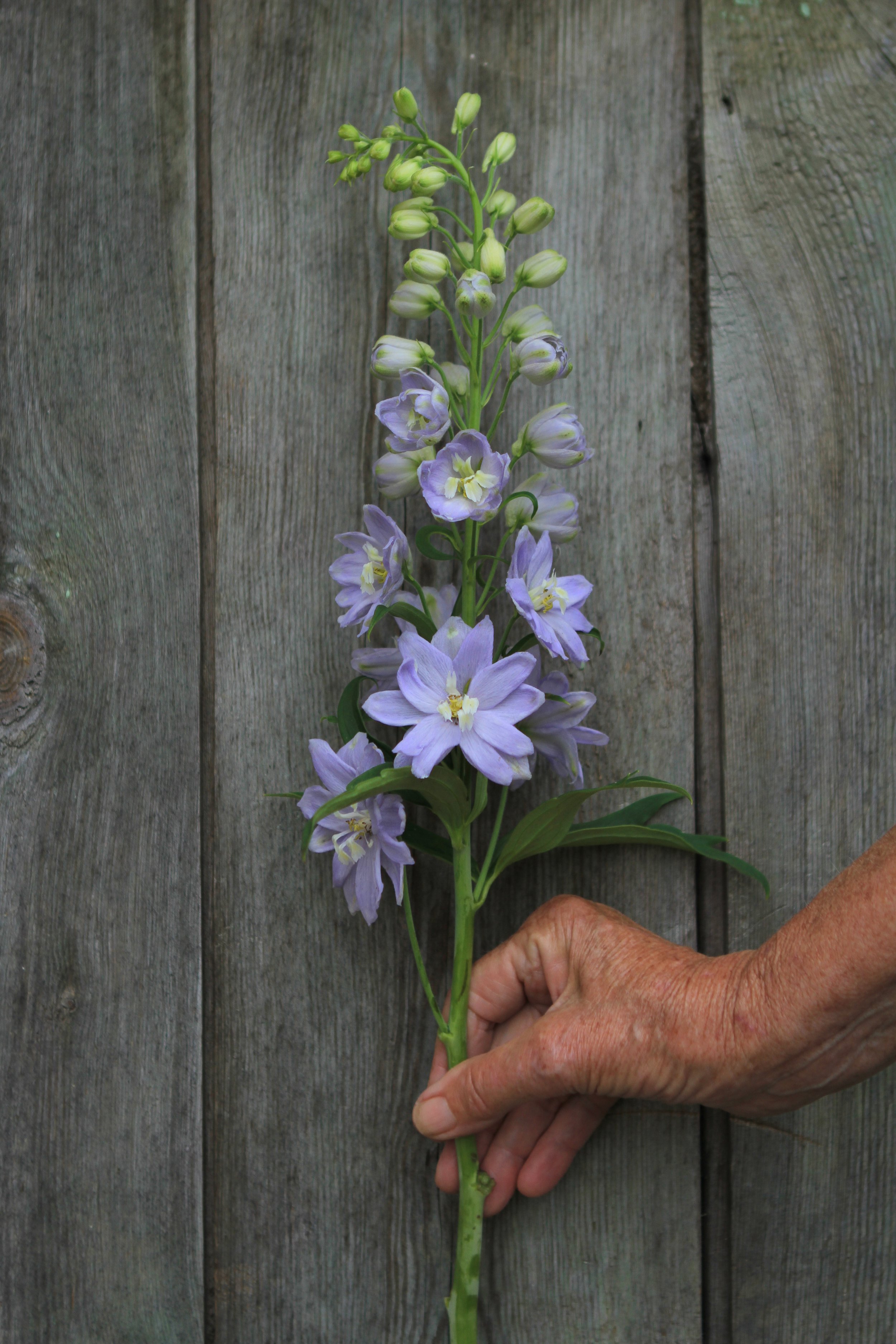How I grow delphinium from seed
Delphinium can be one of the trickier seeds to germinate - I hear this from a lot of grower friends so I thought I’d share how I do it and things I’ve tried in the past.
When I purchase delphinium seed (and larkspur, too) I immediately store in my freezer. When I am ready to start, I take out of freezer and if I have time, I put the seed into a coffee filter and spray with water lightly and store in a sealed plastic bag for a couple of days (as early as day 3-4 you can see the little tails - those are roots!) until I see some germination happening. This method is way more time consuming as once the seeds are wet they are harder to pick up individually they tend to stick together - but it allows you to plant the germinated seeds only and I find those trays are much more successful long term than if I were to simply sow, cover and wait.
This season I’ve been skipping this step though! It can be fussy and if you have too much water in the bag, the seeds can rot and I sometimes lose track of my timing (always too much on my plate!) and they start opening / put out longer roots which are incredibly easy to damage. Also, with seed shortages and delays, I can’t afford to mess up! So I’ve started sowing in a shallow tray of soil, covering with a thin layer of fine vermiculite, covering with a dome and placing on a heat mat in my heated greenhouse (which stays around 50 at night) at the beginning of January. I used to use soil blocks with Fort Vee mix (Vermont Compost) but these babies tend to stay in trays for up to 3 months and the soil blocks just aren’t deep enought as delphinium puts out long tap roots, so I switched to a ProMix seed starting blend in 72 cell trays. These seeds germinate very sporadically - 10-14 days - and tend to grow quite slowly. I prick out the plants as they develop and pot up. Once the tray has germinated, no more dome!
These are plants that don’t like their crowns to be covered in soil - they can rot that way and their first true leaves (and all new growth) will emerge from that base. They also don’t like wet feet (but need lots of water). I aim to harden off in time to plant out in March and covering with frost cloth really depends on weather - I’ve gotten quite averse to the cover dance and these guys really can tolerate some cold. I am in Adamstown (Frederick) Maryland and these plants come back for me year after year in some cases (with no special fussing or covering). I have planted in partial shade and full sun, in well-drained soil, and they tank in the heat of the summer here in hot and humid Maryland no matter where they are planted, though they may give you another flush in the fall if you continue to weed and water. These are a classic cool flower - they enjoy a period of cool to establish large roots and then when spring comes they will start to take off.
For me, the Belladonna series is much easier to grow than the more expensive hybrid varieties. Cliveden Beauty is by far the easiest and I’ve added Maxima and Casablanca from the Belladonna series to my crop plan too, though their germ is not as reliable. Guardian / Magic Fountains are taller and showier, a little more spendy again with spotty germ for me (that doesn’t stop me, though!) I’d like to order in some special seed from overseas at some point but for now I’m sticking to the basics. I stay away from mixes as I like to know what color I am growing for purposes of bouquet making / having enough of a variety to offer wholesale, but for the home gardener, Botanical Interests puts out a couple of lovely mixes that would be worth trying.
We get occasional extreme winds at my farm as we are in a bit of a valley between two (very small) mountain ranges, so going forward I will be netting my delph to ensure that these very slow flowers give me the most bang for my buck, nothing worse than coming out after a storm to a row of leveled stems that you were planning to harvest!!! As you can imagine, with long hollow stems (sometimes 3 - 4 feet) and lots of florets up top, these plants can get very top heavy. For the home gardener, using a bamboo stake or something similar to tie up plants might make sense.
These flowers for me fall into the cut and come again category though nowhere near as productive as what you think of as traditional cut and come agains, such as zinnias and cosmos. They are interesting to look at, they dry well, the colors are not found in many // any other varieties that I grow so that is the draw for me. Also, I love a good spike!
I will update this post with more photos and welcome any feedback!
Delphinium, freshly sown with a light sprinkling of vermiculite
Delphinium babies showing their first true leaves
Delphinium growing on in the greenhouse - This is the size at which I like to plant out in the field
Magic Fountains delphinium - Lavender with white bee
Magic Fountains delphinium - Dark Blue with white bee - Definitely read purple not blue!!
Delphinium from a mix a couple of years ago - Very very tall and lovely colors!
Was this useful? Should I do more posts like this?







